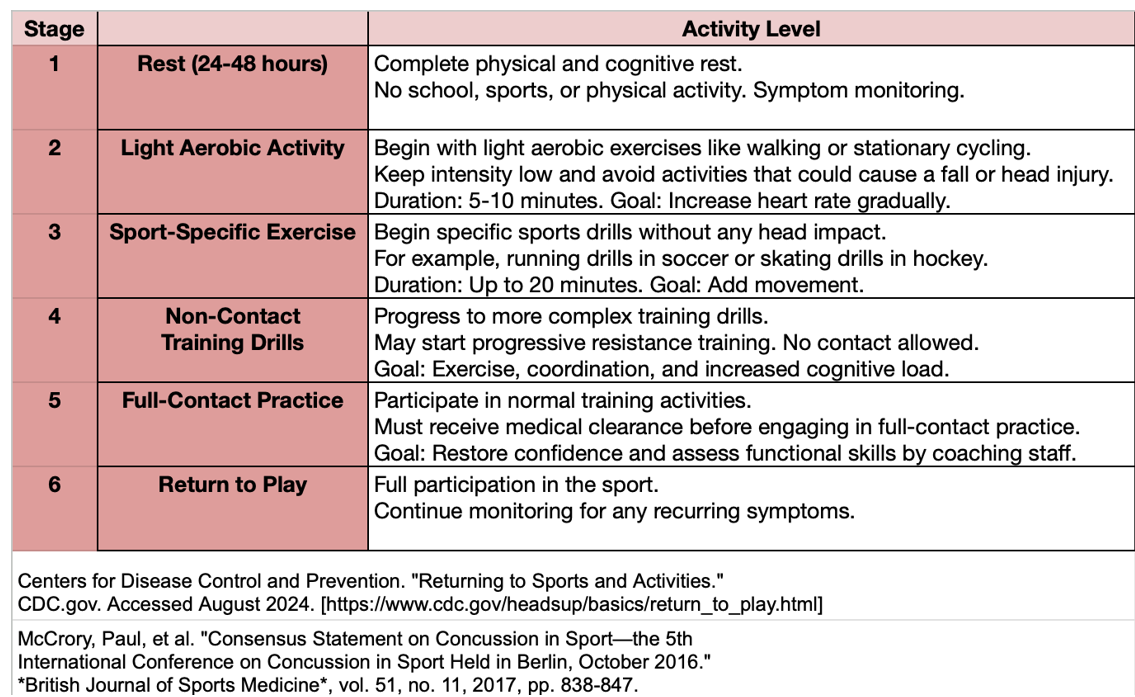Guarding Young Athletes: Understanding and Preventing Concussions
Concussions in youth sports: Learn about the prevalence and impact of concussions in youth sports, the signs and symptoms to watch for, the importance of timely and proper concussion management, strategies for preventing concussions, and the role of concussion protocols in ensuring athlete safety.

Overview of Concussions in Youth Sports
Concussions are a prevalent concern in youth sports due to their high incidence rates, making them the leading cause of unintentional injury for teens and young adults, with a significant number attributed to sports-related activities. For instance, a study highlighted that athletes with a history of concussions, older youths, females, and those engaging in high-contact sports are at a heightened risk of experiencing a concussion [5]. This increased susceptibility to concussions among certain groups underscores the importance of targeted prevention and management strategies to safeguard the well-being of young athletes.
Moreover, the vulnerability of high school athletes to concussions compared to collegiate athletes is a critical point of concern within the realm of youth sports. This difference in susceptibility emphasizes the need for age-specific protocols and interventions to address the unique risks faced by younger sports participants. By understanding the demographic and activity-related factors that contribute to the prevalence of concussions in youth sports, stakeholders can tailor preventive measures and support mechanisms to create a safer environment for young athletes. Ultimately, raising awareness about these risk factors is essential to foster a culture of proactive concussion management and injury prevention in youth sports.

Prevalence and Impact of Concussions in Youth Sports
When it comes to the prevalence of concussions in youth sports, the risks differ significantly across various sports. For instance, high-contact sports like wrestling, martial arts, and football have been identified as having the highest relative risk of concussions among young athletes. This underlines the importance of understanding the specific risks associated with different sports to implement targeted prevention measures effectively.
Moreover, research has shown that athletes with a history of concussions are particularly vulnerable to sustaining another head injury. This heightened risk emphasizes the need for tailored concussion management strategies for these individuals to prevent recurrent injuries and long-term health implications. Understanding these risk factors not only allows for better prevention efforts but also highlights the importance of ongoing monitoring and support for athletes with a history of concussions to safeguard their well-being.
Furthermore, the variability in the occurrence of concussions among youth athletes participating in different sports accentuates the necessity of sport-specific prevention strategies. By acknowledging these distinctions, coaches, parents, and sports organizations can implement targeted interventions such as rule modifications, skill development programs, and appropriate safety equipment to reduce the incidence of concussions. This tailored approach is crucial in creating a safer environment for young athletes and promoting their long-term health and well-being on the field.

Signs, Symptoms, and Risks Associated with Concussions
Recognizing the signs and symptoms of concussions is vital in ensuring the well-being of young athletes participating in sports. Apart from the commonly known symptoms like headaches, nausea, and balance issues, other indicators such as confusion, forgetfulness, and alterations in behavior should be taken seriously by parents, coaches, and athletes. For instance, if a child demonstrates forgetfulness or appears disoriented after a sports-related incident, it could be a sign of a concussion that requires immediate attention and proper evaluation.
In addition to the immediate symptoms, it’s essential to consider the long-term effects of concussions on children’s brain health. Studies have shown that untreated concussions can lead to persistent issues such as anxiety, depression, and memory problems. For example, a child who continues to participate in sports without proper concussion management may be at a higher risk of developing anxiety or experiencing difficulties with memory recall later in life. This highlights the critical need for effective concussion prevention strategies and proactive management protocols in youth sports to safeguard the overall well-being of young athletes.
Importance of Timely and Proper Concussion Management
Timely and proper concussion management plays a critical role in safeguarding the health and well-being of young athletes. By promptly recognizing and addressing concussions, coaches, parents, and medical professionals can prevent long-term consequences such as anxiety, depression, and memory issues. For instance, a high school soccer player who sustains a concussion during a game must be removed from play immediately and evaluated by a healthcare provider to ensure a safe recovery process.
Furthermore, the structured return-to-play protocol is an integral component of effective concussion management. This protocol outlines the gradual steps an athlete must follow before returning to sports activities, aiming to minimize the risk of further injury. For example, a baseball player diagnosed with a concussion should not resume practice or competition until they have completed each stage of the return-to-play process under the supervision of a healthcare professional. This approach prioritizes the athlete’s safety and well-being while reducing the likelihood of re-injury.
In conclusion, the significance of timely and proper concussion management cannot be overstated in youth sports. By prioritizing the safety and health of young athletes, communities can create a culture of proactive care that minimizes the potential long-term effects of concussions and promotes a safe sporting environment for all participants.

Strategies for Preventing Concussions in Youth Sports
Preventing concussions in youth sports is paramount to ensuring the safety and well-being of young athletes. In addition to the use of helmets, which are vital in safeguarding participants from head injuries, proper education on tackling techniques is essential in minimizing the risk of concussions. For instance, in football, where the risk of head injuries is significant, ensuring that players are well-versed in safe tackling methods can go a long way in preventing concussions.
Moreover, raising awareness among parents, coaches, and athletes about the signs and symptoms of concussions is crucial for early detection and timely intervention. By educating stakeholders about the potential indicators of a concussion, such as headache, dizziness, and confusion, individuals involved in youth sports can promptly recognize when a player may have sustained a head injury and take appropriate action to ensure their safety. This proactive approach not only aids in the immediate management of concussions but also helps in preventing further complications that may arise from undiagnosed or improperly treated head injuries.

Emergency Room Care
The focus of an ER visit will be excluding severe head injury by performing a CT and symptom management.
A CT Scan of the head is a quick test used to determine if a head injury resulted in bruising or bleeding within the brain. Typically the study takes less than a minute to perform and guides further management.
Symptoms such as pain and nausea are controlled with medications and any concomitant injuries are also managed such as neck injuries, torso injuries, extremity injuries.
Surrounding clinics will often send patients to El Paso ER for an initial evaluation – particularly when they require advanced imaging.
Patients which are cleared are placed on a return to play protocol in conjunction with the school district.
If you or a loved one sustained a head injury – please don’t delay – call or come by today so we can properly evaluate you!


